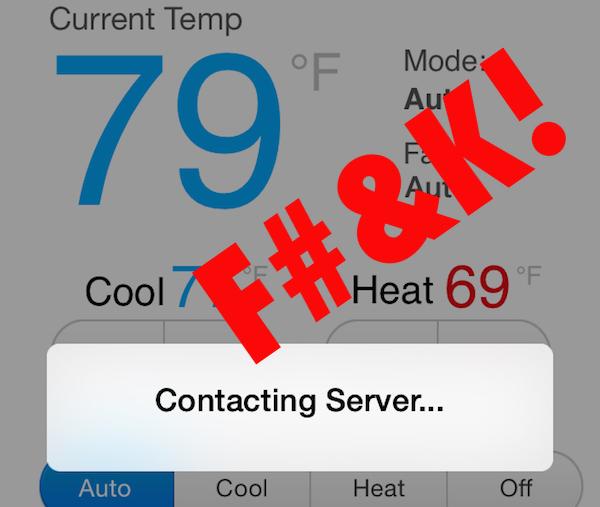The Smart Home: Your Hub or Mine?

Wink Hubs experienced a complete service disruption between the hours of 12:40pm ET and 11:00 ET on April 18th.Throughout this outage, all Wink homes were completely secure and never vulnerable. In fact, the root cause of our service disruption was caused by a security measure we implemented in the early days of the program..
Since the dawn of Wink we’ve worked hard to provide our customers with the most secure home automation platform available.
Because of a misconfiguration of the aforementioned security measure, Wink Hubs lost their connection to the Internet for an extended period of time. During this time, users were not able to control their Hub-dependent devices with the Wink app. Schedules and Robots also did not function. [emphasis added]
While we were able to recover and reconnect the majority of hubs, many of our users with Wink Hubs were emailed and asked to return their hub and await a replacement.
Additionally, we are immediately suspending all sales of Wink Hubs across all retail channels. We expect to resume sales within the week.
First of all, let me say that the Wink folks, deserve some kudos for the episode so far. It all started because they were trying to do something beneficial—updating the firmware in the Wink Hubs installed in users’ homes. The procedure failed, quite epically, because of a misconfiguration of a security measure previously implemented in the Hubs. Security measures are a good thing. Updates are (usually) a good thing. (If you’re not sure, ask a dead-in-the-water Revolv Hub owner…)
As they say, “Shit happens.” Where the Wink folks (Winkies? Winkers?) really distinguished themselves is in their reaction to the “preventable” outage. Instead of obfuscating the matter or trying to spin the problem into something totally out of their control, Wink owned up to the mistake. “As previously mentioned,” they said in an updated statement online, “we suffered an outage this weekend that caused many Wink HUBs to fall offline. This outage was preventable and we are deeply sorry. It pains us to have inconvenienced you as much as we know we have.”
Wink was able to get a lot of Hubs back up and working without any help from the owners. Some of the Hubs, however, became plastic bricks. For those with Hubs that refused to wake up, Wink has two options: send the dormant Hub back to Wink (with the company supplying the box and round-trip shipping) for rejuvenation and eventual return; or (for the more adventurous) follow Wink’s instructions for making a few changes to your router in order to arouse the Hub from its slumber. Wink is also emailing a $50 Wink gift card to owners of totally out-of-service Hubs.
From what I can tell, Wink is handling the situation in an honorable and forthright way and is genuinely trying to do the right thing.
That’s all well and good. But here’s the problem: Wink’s Hub—just like the majority of the other DIY smart home hubs currently on the market—is totally Internet dependent.
If you lose connection to the Internet, you will still be able to manually control your products but you will not be able to control them via the Wink App. Once the Internet connection is restored, your Wink HUB and compatible products will reconnect automatically.In the case of door locks, they use batteries to operate so you can always access the lock manually with your user code or with a key.
In other words, when your Internet connection goes down, so goes your ability to control the smart devices connected to the Hub. You’d think that since a lot of the devices communicate with each other via your home network, they’d still talk even without the Internet. This would seem to be even more the case for Z-Wave, ZigBee, and Bluetooth devices. When your smart home hub requires an always-on connection to the Internet, though, there’s no way for you to communicate with it if the Internet is not available. Sure, as Wink says, “you will still be able to manually control your products”—but if I wanted to manually control my products, I wouldn’t have bought a smart device in the first place.
The Wink Hub isn’t the only DIY smart home gadget available today to suffer from what I consider to be a serious drawback. The Staples Connect Hub, the Nest Thermostat, Piper, and lots of other smart home hubs/devices are addicted to Internet access. I totally understand that in order to operate the lights in my home from on top of Mt. Everest like Fibaro’s Mariusz Małkowski is going to try to do, my smart home hub will need Internet access. So will my phone while I’m on the mountain, for that matter. But I should be able to control things while I’m in my living room without relying on the communication going halfway around the world and back.
Hopefully, while Mariusz Małkowski is up there, somebody will come up with a way to get rid of Mt. Everest's 12-Ton Poop Problem. (Sounds like a job for one huge mountain-climbing Roomba…)
- Log in or register to post comments














































